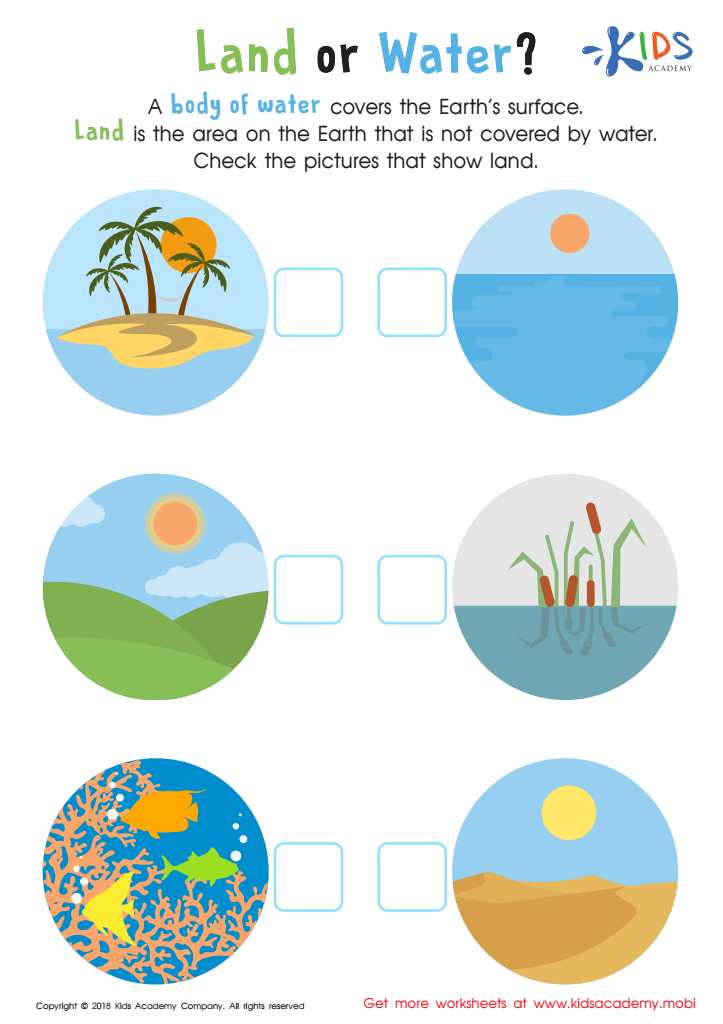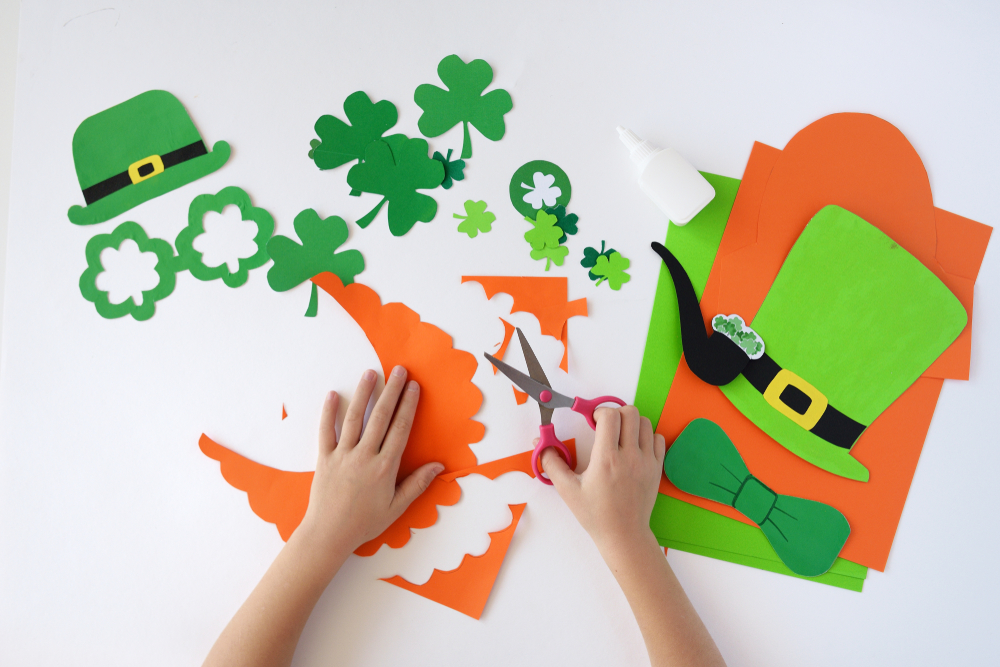Identifying environments Worksheets for Kids
1 filtered results
-
From - To


Land or Water Worksheet
Question/Answer
Why is the Identifying environments skill important for Kindergarten students?
The Identifying environments skill is crucial for Kindergarten students because it helps them understand and categorize the world around them. This foundational skill aids in developing their observational abilities, enhances their understanding of different settings and their features, and fosters curiosity and respect towards various environments. It lays the groundwork for future learning in science and geography.
What are some effective activities to train students’ Identifying environments skill when teaching them about Geography?
Effective activities for training students in identifying environments in Geography include hands-on map exercises, interactive digital software that simulates different environments, field trips to various geographical locations, photo and video analysis of distinctive environmental features, and classroom discussions and presentations on the characteristics of different environments. These activities encourage observation, analysis, and critical thinking.
How to test a Kindergarten student’s Identifying environments skills?
To test a Kindergarten student's identifying environments skills, present them with images or models of different environments (e.g., desert, forest, ocean, and city). Ask the student to name or match each environment to its corresponding image. Additionally, you can have them sort objects or animals into the environment where they belong to assess their understanding further.
 Assign to My Students
Assign to My Students





















